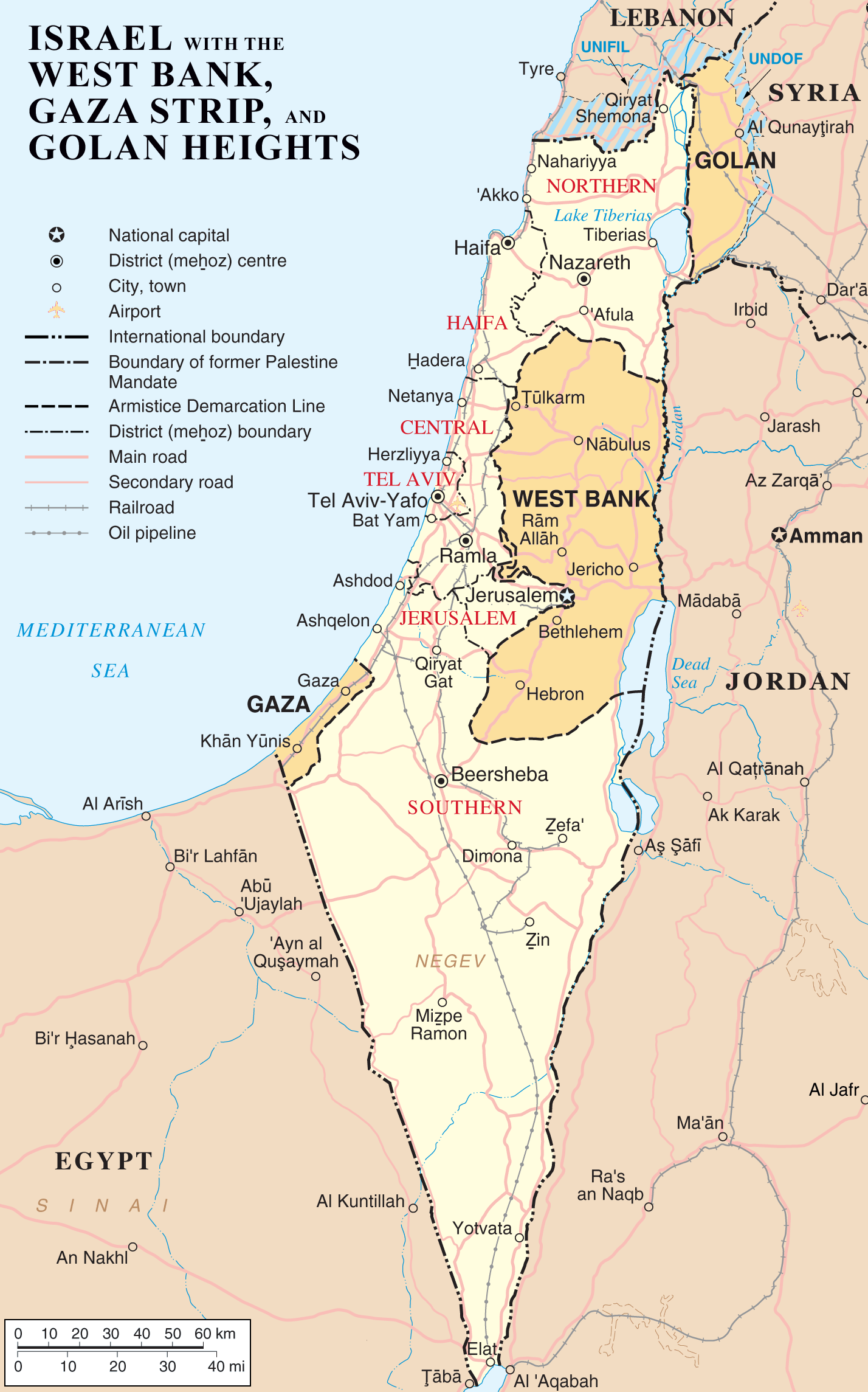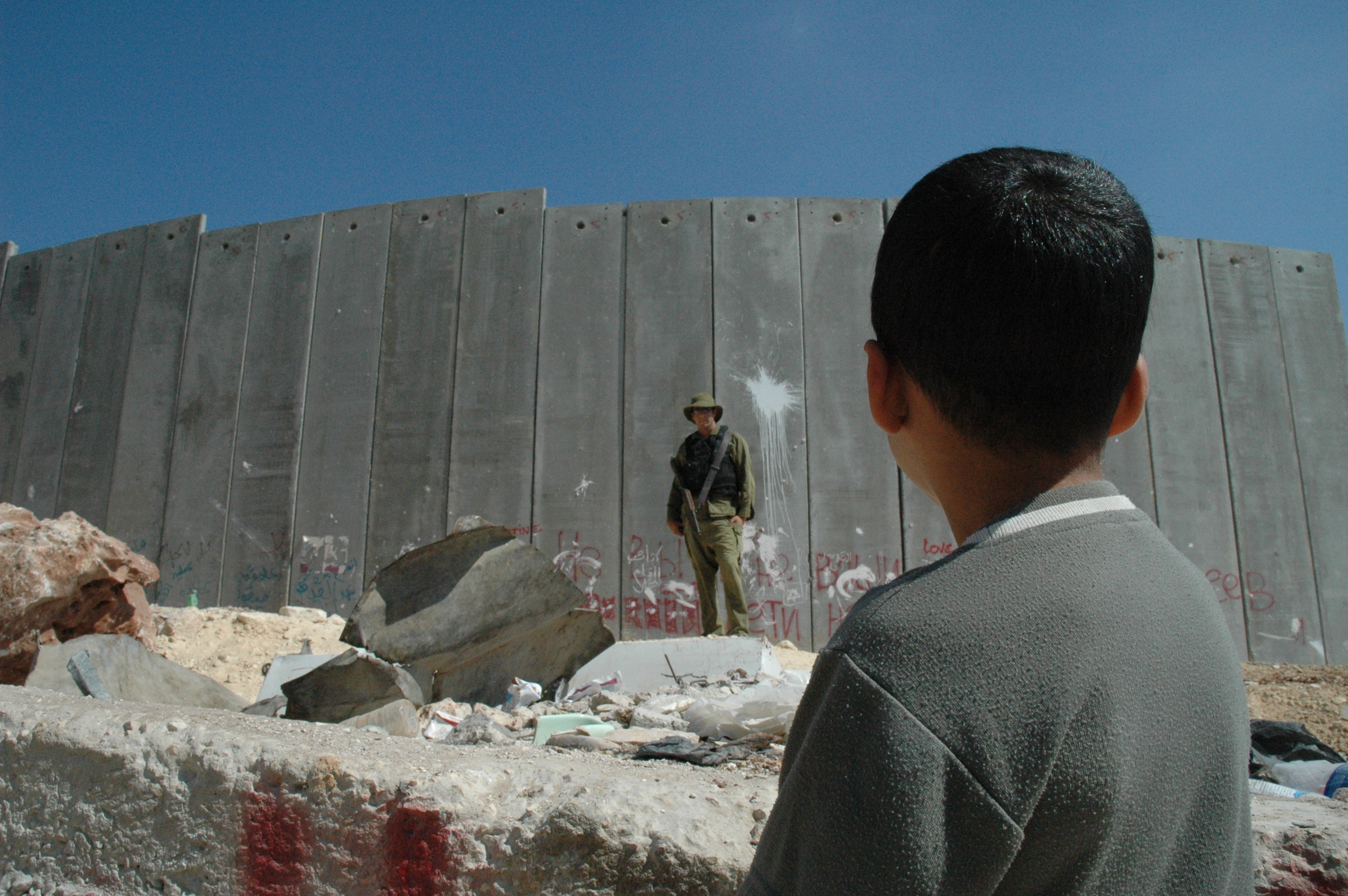The Israeli-Palestinian Conflict, 2000–2010

Despite several negotiations attempts, peace still eludes the region
By Jennie Wood
The dawn of the new millennium saw continued fighting between Israel and the Palestinians, as well as interference from outside forces, which complicated the conflict to an unprecedented degree. From the September 11, 2001, World Trade Center attack to the rise of Hezbollah to the Arab Spring uprisings in the Middle East, incidents and circumstances in other countries have directly impacted the situation with Israel and the Palestinians. The following article provides an overview of major negotiation attempts along with key issues and events since 2000. For events before 2000, check out the earlier history of the conflict. Peace Negotiations BreakdownFrom July 11-24, 2000, Israeli Prime Minister Ehud Barak and Palestinian National Authority (PNA) Chairman Yasser Arafat met with U.S. President Bill Clinton at Camp David to negotiate a final settlement based on the 1993 Oslo Peace Accords. Despite progress on other issues, the two sides could not reach an agreement on Jerusalem. Jerusalem remained a contentious issue because it is a holy city to Judaism, Islam as well as Christianity and the two sides refused to relinquish control of it. On September 17, 2000, according to the Associated Press, Palestinians announced any deal that did not include all of the West Bank and sovereignty over East Jerusalem, including the Haram esh-Sharif (Temple Mount) where the Al-Aksa mosque is located, would not be acceptable. The Second Intifada BeginsOn September 28, 2000, Ariel Sharon, Israel's minister of foreign affairs, visited the Temple Mount in Jerusalem, a holy site to both Jews and Muslims. Sharon's visit ignited a violent revolt from the Palestinians, which started the second intifada, also dubbed the Al-Aksa intifada. The next day, riots around the Al-Aksa mosque left seven people dead. More unrest followed, including the lynching of Israeli soldiers in Ramallah. To end the violence, the U.S. pushed for an October summit in Sharm El Sheikh. At the conference, hosted by Egyptian President Hosni Mubarak, both sides agreed to a truce. At the urging of the Palestinians, a U.S.-led committee was formed to investigate the violence and make recommendations to the United Nations. The committee's findings eventually led to the Mitchell Report. Four days after the conference, Arafat met with other Arab leaders at a summit, also hosted by Mubarak, and praised the second intifada. Arafat called for an international commission to investigate the violence, instead of the commission previously agreed upon four days earlier in Sharm El Sheikh. Two weeks later a suicide bombing in West Jerusalem ended the truce. Time Running OutIn December 2000, with his term in office about to end, President Clinton introduced a two-state solution that gave the Palestinians roughly 97% of the West Bank, sovereignty over their airspace, and control over Arab neighborhoods in Jerusalem including Haram esh-Sharif. Clinton also proposed that an international force replace the Israel Defense Force (IDF) in the Jordan valley. However, the proposal stipulated that refugees could only return to Israel with Israeli consent. On December 27, 2000, the Israeli government accepted the proposal; however, the deadline passed without a commitment from the Palestinians and the window for negotiations closed. Sharon replaced Barak as Israel's prime minister and President Clinton's term ended. Violence ContinuesDespite efforts from the Mitchell commission and other international leaders, attacks on both sides continued into 2001 at an alarming rate. Palestinians carried out some of the most horrific suicide bombings and terrorist attacks in years (Hamas and the Al-Aksa Martyr Brigade claimed responsibility for the majority of them), killing Israeli civilians at cafés, bus stops, and supermarkets. In retaliation, Israel unleashed bombing raids on Palestinian territory and sent troops and tanks to occupy West Bank and Gaza cities. Events outside Israel and Palestinian territory exacerbated the already tense situation. The September 11, 2001 terrorist attack on the World Trade Center in the U.S. exposed a complicated set of ties between several terrorist organizations and states hostile toward Israel. Hamas and Hezbollah were linked to Al-Qaeda; pro-Osama Bin Laden demonstrations were held in Palestinian-controlled areas; and Karine A, a boat linked to Iran and carrying illegal arms destined for the PNA was intercepted by Israel. These circumstances caused the U.S. and the European Union to give Israel more freedom to act against the Palestinians. During Passover, a Hamas suicide bomber kills 30 Israelis and wounds about 100 others at a Nethanya restaurant. In retaliation, Israel launched operation Defensive Shield, an effort to stamp out terrorist attacks. The operation included reoccupying such towns as Ramallah, Nablus, and Jenin. During the operation, Israel Defense Forces found evidence that Arafat had approved the organization of terror cells and that the PNA treasury department funded the acquisition and distribution of explosive belts used by suicide bombers. In 2002, while preparing to invade Iraq, the U.S. pushed the Palestinians to reform their government and eliminate support for terror groups. The U.S. formed a group with the European Union, the United Nations, and Russia, known as the "Quartet." The Quartet produced roadmap for peace, which envisioned the creation of a Palestinian state by 2005. The Security BarrierBritish, U.S., and Australian armed forces invaded Iraq on March 20, 2003. Like much of the Arab world, the Palestinians resented the U.S. occupation of Iraq. The Palestinians had supported Saddam Hussein. His regime sheltered Palestinian militants and provided money for families of suicide bombers. Iraq quickly fell and, on April 29, Mahmud Abbas was appointed prime minister. However, his election did not end the violence. Arafat put himself in charge of a new security force, which violated roadmap conditions. Suicide bombings, terrorist attacks, and retaliation continued. By fall 2003, it became clear that the road map led to a dead end as Palestinian attacks on Israeli civilians continued, and Israel stepped up its "targeted killings" of Palestinian militants. In 2003, the Israel Labor Party pressed for a security barrier along the 1948 armistice Green Line to prevent suicide attacks. The Green Line was the boundary set between Israel and Jordan after the Arab-Israeli War. The security proposal was based on the Gaza barrier, which had eliminated infiltration from Gaza. At first, Prime Minister Sharon opposed the barrier because it divided Jerusalem and left Israeli settlements in the West Bank unprotected. After Sharon and his Likud party won a landslide election, he embraced the Labor Party's barrier idea, but changed the barrier route to include Israeli settlements. Sharon's route cut off Palestinians from farms and sources of jobs, creating hardships condemned by both Palestinian and Israeli peace groups. On February 8, 2005, both sides met at a summit hosted by Egypt in Sharm El Sheikh and announced an end to the violence. Israel agreed to release 900 Palestinian prisoners and to gradually withdraw from Palestinian cities. Jordan's King Abdullah and Egyptian President Mubarak, both in attendance, pledged to return ambassadors to Israel. The Intifada was officially over; however, following the same trend of previous conferences, Hamas launched a suicide bombing in Tel Aviv later that month. Abbas condemned the bombing, and the PNA made arrests, but Israel froze its plans to withdraw from Palestinian cities. Disengagement and Hamas Seizes GazaBy September 2005, Prime Minister Sharon withdrew all Israeli settlers and soldiers from Gaza. However, Israel retained control of the border crossings and continued periodic raids on Gaza. On January 4, 2006, Sharon suffered a stroke, leaving Israel leadership in the hands of Ehud Olmert and the new, centrist Kadima party. Also in January 2006, the Palestinians held parliamentary elections. In a surprise victory, Hamas ousted the Fatah government, but Abbas remained PNA president. The two factions briefly formed a national unity government, but, in June 2007, Hamas took control of Gaza, routing Fatah forces and killing more than 100 people. Israel responded to Hamas' seize by maintaining even tighter control on the goods and people entering and exiting the territories. International FalloutIn June 2006, Hamas and other Palestinian militant groups took Gilad Shalit, an Israeli soldier, from Israeli territory and dragged him into Gaza. Despite prisoner exchange attempts, Shalit has been held hostage ever since. On July 12 2006, Hezbollah militants crossed the Lebanon-Israel border and attacked an Israeli army patrol, killing three soldiers and kidnapping two others. The incident coincided with a series of mortar and rocket attacks on northern Israel by Hezbollah. Both incidents provoked a month-long war in which 1,200 Lebanese and 128 Israelis were killed. Both sides stopped fighting on August 14, 2006. The UN and international human rights groups condemned Israel for using cluster bombs in Southern Lebanon. The war was criticized within Israel and sparked more resentment from the Arab world. In June 2008, after years of almost daily exchanges of rocket fire between Israelis and Palestinians in the Gaza Strip, Israel and Hamas signed an Egyptian-brokered cease-fire. The fragile agreement held for most of the remainder of 2008. Israel continued its yearlong blockade of Gaza, however, and the humanitarian and economic crisis in Gaza intensified. After the truce ended in December, rocket fire increased. Israel began an air strike and, on January 3, 2009, a ground invasion. The invasion was widely supported within Israel, but drew international criticism because the attack killed at least 1,400 Palestinians and 13 Israelis. The conflict strained Israel's relationship with the United Nations because mortars hit a school run by the UN, killing more than 40 people. An investigation of the three-week war by the UN found that both the IDF and Palestinian groups committed actions equaling war crimes. Israel's government disputed the report. More international condemnation of Israel came in May 2010 after a military operation against a flotilla organized by the Free Gaza Movement and the Turkish Foundation for Human Rights and Freedoms and Humanitarian Relief (IHH). The ships, carrying aid and construction materials, intended to break Israel's blockade of the Gaza Strip. The move was an apparent attempt to further politicize the blockade. In the early hours of May 31, Israeli commandos boarded one of the ships, and there are conflicting accounts of what happened next. The Turkish activists reported that the Israeli commandos opened fire when they landed on deck. Israeli commandos reported that they landed on the ship and were attacked with pipes, knives, and other instruments. The commandos said that then they opened fire and killed nine people on the ship. According to Israeli sources, there was no humanitarian aid on the ship. Moreover, the captain and crew members stated that IHH activists had taken over the ship, keeping passengers off the deck in order to confront the Israelis with weapons. The incident strained relations between Israel and Turkey. After the incident, however, Israel eased its blockade.
Sources: Associated Press, New York Times, mideastweb.org, The Economist, and BBC. |
About the author










